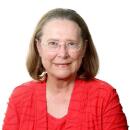VERDUGO VIEWS: City corner marked by history
- Share via
Glendale’s first historic marker still stands at the corner of Verdugo and Windsor roads, the same spot where the Glendale Historical Society installed it in 1952 in partnership with the Odd Fellows, one of Glendale’s first fraternal lodges.
The historic marker was placed at Somerset Farms, home of Glendale pioneer John C. Sherer, who had passed away three years before at 96.
Sherer was a significant figure in our history, serving as the city’s first treasurer, cashier of the first bank, and publisher of the Glendale News (later the Glendale News-Press) from 1907 to 1913. He wrote “History of Glendale and Vicinity,” published in 1924.
A committee representing the Odd Fellows and the historical society chose the site. Thanks to a recording made that day, we have a full description of this historic event.
After Ira Ketcham, pastor of Central Christian Church, gave the invocation, Legory O’Loughlin, president of the historical society, said, “We are dreaming of the day when we’ll have markers throughout the city.”
Thomas Cole, leader of Noble Grand, Glendale Odd Fellows, invoked the lodge’s past, saying, “The lodge is older than the city itself.” Cole spoke of the many civic leaders who were lodge members, including Edward D. Goode, who promoted incorporation as a city; Elkanah Richardson, a trustee of Glendale High School, and Sherer himself.
Carroll Parcher, then-publisher of the News-Press, was next at the microphone.
“It is appropriate that the Odd Fellows, the oldest such organization in Glendale, join with [the historical society] on this site,” Parcher reportedly said. “So much of the planning and growth of Glendale took place here.”
He remembered Sherer well.
“It was in that little print shop up on North Glendale Avenue, where he operated the Glendale News, that I went with my father on business,” Parcher said. “It was there that I developed an interest in printer’s ink.”
After an interlude while John Butler played his accordion, Mayor Paul Burkhard introduced two council members, George Wickham and John Lawson, and local Assemblyman H. Allen Smith.
Other longtime residents were introduced, including Dora Verdugo, “a real old-timer,” the announcer said.
Another old-timer, Harry Hollenbeck, the city’s second policeman, said he had come to Glendale in 1905, adding that his family owned the Glendale Transfer and Storage on North Glendale Avenue.
Harry James, a member of the historical society and president of the Old Settlers Assn., presented the plaque, recalling that he had known Sherer for 30 years and had attended many picnics on the grounds of Somerset Farm. He said Sherer was still chopping down trees at 90. Joseph A. Mellen, director of planning who spent a great deal of time preparing the easement where the plaque was placed, summed up the event.
“One of our functions is to lay plans for the future, so markers of this kind are important as benchmarks of where we have been,” he said.
In 1976, when the county of Los Angeles sought information on historic landmarks in the area, Glendale proudly listed 22 sites, including the first hotel, fire station, bank, church, school and the air terminal. Only a few of these sites have markers.
KATHERINE YAMADA is a Glendale resident and historian. To contact her, call features editor Joyce Rudolph at (818) 637-3241. For more information on Glendale’s history, visit the Glendale Historical Society’s website: www.glendalehistorical.org; call the reference desk at the Central Library at (818) 548-2027; or visit the Special Collections Room at Central (open by appointment only).
NOTE TO READERS
John C. Sherer’s book, “History of Glendale and Vicinity,” published in 1924, was one of the first local histories. Later, the Glendale Historical Society published “Glendale, A Pictorial History,” updated with a centennial edition in 2006. Several Arcadia Publishing books have highlighted Glendale, La Crescenta, La Cañada Flintridge and other local areas.
The newest Glendale book, “Snapshot of Glendale,” is a full-color production with proceeds going to the Special Collections Room at the Glendale Public Library. The book is on sale at the Central Library.
The 1952 plaque dedication recording was recently transferred to CD by Edgar Bullington, children’s librarian at the Grandview library.
“He is really interested in early recordings and radio shows and is good at copying things from old formats to new,” said Nora Goldsmith, in charge of Special Collections at Central Library.
The original recording is on a vinyl LP housed in Special Collections. Bullington copied the recording, and several others, onto CDs, which were then converted to digital files. Those files, stored on the city’s website, can be accessed through the library’s website. The public can listen to these oral histories on their home computer. Some oral histories also have transcripts, which can be read as Adobe PDF files. The direct link to the website is www.ci.glendale.ca.us/library/TheGlendale PublicLibraryOralHistory Collection.asp
If you have questions, comments or memories to share, write to Verdugo Views, c/o Glendale News-Press, 221 N. Brand Blvd., Second Floor, Glendale, CA 91203-2609. Please include your name, address and phone number.
